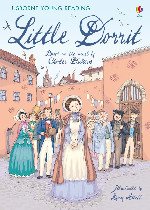
Little Dorrit is a novel by Charles Dickens, originally published in serial form between 1855 and 1857. The story features Amy Dorrit, youngest child of her family, born and raised in the Marshalsea prison for debtors in London. Arthur Clennam encounters her after returning home from a 20-year absence, ready to begin his life anew. The novel satirises the shortcomings of both government and society, including the institution of debtors' prisons, where debtors were imprisoned, unable to work, until they repaid their debts. The prison in this case is the Marshalsea, where Dickens's own father had been imprisoned.

The Adventures of Sherlock Holmes(福尔摩斯历险记) 立即阅读
The Adventures of Sherlock Holmes is a collection of twelve short stories by Arthur Conan Doyle, featuring his fictional detective Sherlock Holmes. It was first published on 14 October 1892; the individual stories had been serialised in The Strand Magazine between July 1891 and June 1892. The stories are not in chronological order, and the only characters common to all twelve are Holmes and Dr. Watson. The stories are related in first-person narrative from Watson's point of view.
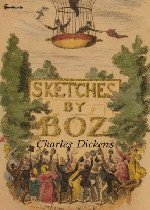
Sketches by "Boz," Illustrative of Every-day Life and Every-day People (commonly known as Sketches by Boz) is a collection of short pieces Charles Dickens originally published in various newspapers and other periodicals between 1833 and 1836. They were re-issued in book form, under their current title, in February and August 1836, with illustrations by George Cruikshank. The first complete one volume edition appeared in 1839. The 56 sketches concern London scenes and people, and the whole work is divided into four sections: "Our Parish", "Scenes", "Characters" and "Tales". The material in the first three sections consists of non-narrative pen-portraits, but the last section comprises fictional stories.
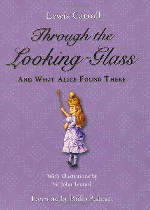
Through the Looking-Glass(爱丽丝漫游镜中世界) 立即阅读
I had sent my heroine straight down a rabbit-hole ...without the least idea what was to happen afterwards,' wrote Charles Dodgson, describing how Alice was conjured up one 'golden afternoon' in 1862 to entertain his child-friend Alice Liddell. His dream worlds of nonsensical Wonderland and the back-to-front Looking-Glass kingdom depict order turned upside-down: a baby turns into a pig; time is abandoned at a disordered tea-party; and a chaotic game of chess makes a seven-year-old girl a Queen. But amongst the anarchic humour and sparkling word play, puzzles, paradoxes and riddles, are poignant moments of elegiac nostalgia for lost childhood. Startlingly original and experimental, the Alice books provide readers with a double window on both child and adult worlds.
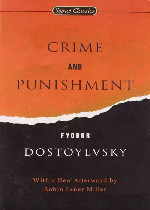
Crime and Punishment(罪与罚) 立即阅读
Crime and Punishment (Russian: Преступлéние и наказáние, tr. Prestupleniye i nakazaniye, IPA: [prʲɪstʊˈplʲenʲɪje ɪ nəkɐˈzanʲɪje]) is a novel by the Russian author Fyodor Dostoyevsky. It was first published in the literary journal The Russian Messenger in twelve monthly installments during 1866. Later, it was published in a single volume. It is the second of Dostoyevsky's full-length novels following his return from 5 years of exile in Siberia. Crime and Punishment is considered the first great novel of his "mature" period of writing.

The Prince (Italian: Il Principe [il ˈprintʃipe]) is a 16th-century political treatise by the Italian diplomat and political theorist Niccolò Machiavelli. From correspondence a version appears to have been distributed in 1513, using a Latin title, De Principatibus (Of Principalities). However, the printed version was not published until 1532, five years after Machiavelli's death. This was done with the permission of the Medici pope Clement VII, but "long before then, in fact since the first appearance of The Prince in manuscript, controversy had swirled about his writings".

A Child's History of England(写给孩子们看的英国史) 立即阅读
A Child's History of England is a book by Charles Dickens. It first appeared in serial form in Household Words, running from 25 January 1851 to 10 December 1853. Dickens also published the work in book form in three volumes: the first volume on 20 December 1851, the second on 25 December 1852 and the third on 24 December 1853. Although the volumes were published in December, each was postdated the following year. Dickens dedicated the book to "My own dear children, whom I hope it may help, bye and bye, to read with interest larger and better books on the same subject". The history covered the period between 50 BC and 1689, ending with a chapter summarising events from then until the accession of Queen Victoria.
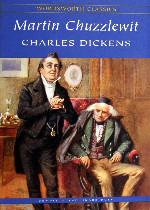
Life And Adventures Of Martin Chuzzlewit(马丁▪翟述伟) 立即阅读
The Life and Adventures of Martin Chuzzlewit (commonly known as Martin Chuzzlewit) is a novel by Charles Dickens, considered the last of his picaresque novels. It was originally serialised between 1842 and 1844. While writing it Dickens told a friend that he thought it his best work, but it was one of his least popular novels. Like nearly all of Dickens' novels, Martin Chuzzlewit was released to the public in monthly instalments. Early sales of the monthly parts were disappointing, compared to previous works, so Dickens changed the plot to send the title character to America. This allowed the author to portray the United States (which he had visited in 1842) satirically as a near wilderness with pockets of civilisation filled with deceptive and self-promoting hucksters.
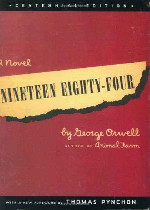
Nineteen Eighty-Four(1984) 立即阅读
Nineteen Eighty-Four, often published as 1984, is a dystopian novel published in 1949 by English author George Orwell. The novel is set in Airstrip One, formerly Great Britain, a province of the superstate Oceania. Oceania is a world of perpetual war, omnipresent government surveillance and public manipulation. Oceania's residents are dictated by a political regime euphemistically named English Socialism (shortened to "Ingsoc" in Newspeak, the government's invented language). The superstate is under the control of the privileged, elite Inner Party.
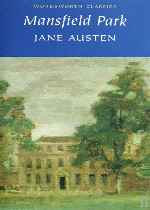
Mansfield Park is the third published novel by Jane Austen, first published in 1814. The novel tells the story of Fanny Price starting when her overburdened family sends her at age 10 to live in the household of her wealthy aunt and uncle, through to her marriage. The novel was first published by Thomas Egerton. A second edition was published in 1816 by John Murray, still within Austen's lifetime. The novel did not receive any critical attention when it was initially published; the first particular notice was in 1821, in a positive review of each of the published novels by Jane Austen.